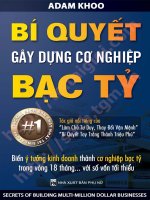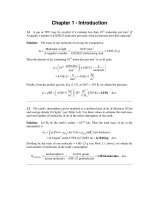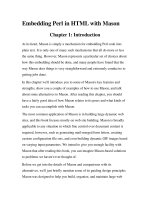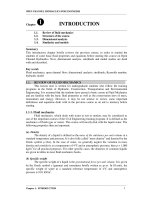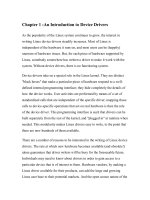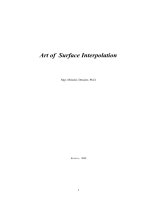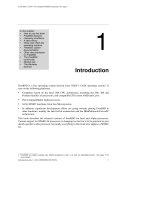Chapter 1: Course Introduction
Bạn đang xem bản rút gọn của tài liệu. Xem và tải ngay bản đầy đủ của tài liệu tại đây (983.53 KB, 28 trang )
© 2002, Cisco Systems, Inc. All rights reserved.
Distance Vector Routing
©©2002,
2002,Cisco
CiscoSystems,
Systems,Inc.
Inc.All
Allrights
rightsreserved.
reserved.
ICND v2.0—5-2
2
Objectives
Upon completing this lesson, you will be
able to:
• Describe the features offered by distance vector
routing protocols and give examples of each
• Describe the issues associated with distance
vector routing and identify solutions to those
issues
© 2002, Cisco Systems, Inc. All rights reserved.
ICND v2.0—5-3
Distance Vector Routing Protocols
• Routers pass periodic copies of routing table to neighbor
routers and accumulate distance vectors.
© 2002, Cisco Systems, Inc. All rights reserved.
ICND v2.0—5-4
Sources of Information and
Discovering Routes
• Routers discover the best path to
destinations from each neighbor.
© 2002, Cisco Systems, Inc. All rights reserved.
ICND v2.0—5-5
Selecting the
Best Route with Metrics
© 2002, Cisco Systems, Inc. All rights reserved.
ICND v2.0—5-6
Maintaining Routing Information
ã Updates proceed step-by-step
from router to router.
â 2002, Cisco Systems, Inc. All rights reserved.
ICND v2.0—5-7
Inconsistent Routing Entries
• Each node maintains the distance from itself to each possible destination network.
© 2002, Cisco Systems, Inc. All rights reserved.
ICND v2.0—5-8
Inconsistent Routing Entries (Cont.)
ã Slow convergence produces inconsistent routing.
â 2002, Cisco Systems, Inc. All rights reserved.
ICND v2.0—5-9
Inconsistent Routing Entries (Cont.)
• Router C concludes that the best path to network
10.4.0.0 is through router B.
© 2002, Cisco Systems, Inc. All rights reserved.
ICND v2.0—5-10
Inconsistent Routing Entries (Cont.)
• Router A updates its table to reflect the new but
erroneous hop count.
© 2002, Cisco Systems, Inc. All rights reserved.
ICND v2.0—5-11
Count to Infinity
• Hop count for network 10.4.0.0 counts to infinity.
© 2002, Cisco Systems, Inc. All rights reserved.
ICND v2.0—5-12
Defining a Maximum
• Define a limit on the number of hops to prevent infinite loops.
© 2002, Cisco Systems, Inc. All rights reserved.
ICND v2.0—5-13
Routing Loops
• Packets for network 10.4.0.0 bounce (loop) between
routers B and C.
© 2002, Cisco Systems, Inc. All rights reserved.
ICND v2.0—5-14
Split Horizon
• It is never useful to send information about a route back in the direction from which the
original information came.
© 2002, Cisco Systems, Inc. All rights reserved.
ICND v2.0—5-15
Route Poisoning
• Routers advertise the distance of routes that have gone down to infinity.
© 2002, Cisco Systems, Inc. All rights reserved.
ICND v2.0—5-16
Poison Reverse
ã Poison reverse overrides split horizon.
â 2002, Cisco Systems, Inc. All rights reserved.
ICND v2.0—5-17
Holddown Timers
• The router keeps an entry for the network’s possible down
state, allowing time for other routers to recompute for this
topology change.
© 2002, Cisco Systems, Inc. All rights reserved.
ICND v2.0—5-18
Triggered Updates
• The router sends updates when a change in its routing table occurs.
© 2002, Cisco Systems, Inc. All rights reserved.
ICND v2.0—5-19
Distance Vector Operation
© 2002, Cisco Systems, Inc. All rights reserved.
ICND v2.0—5-20

